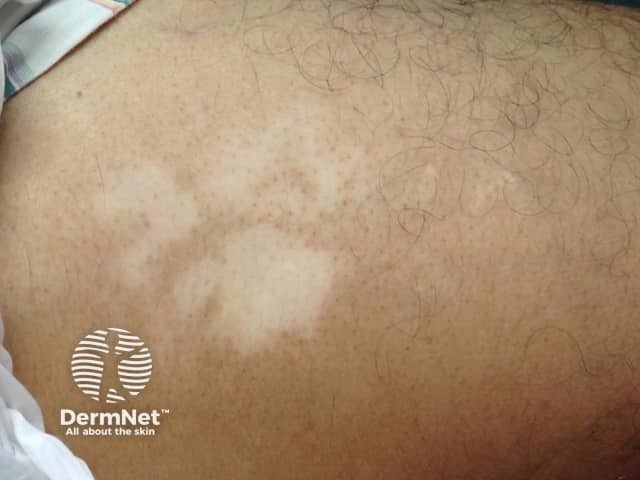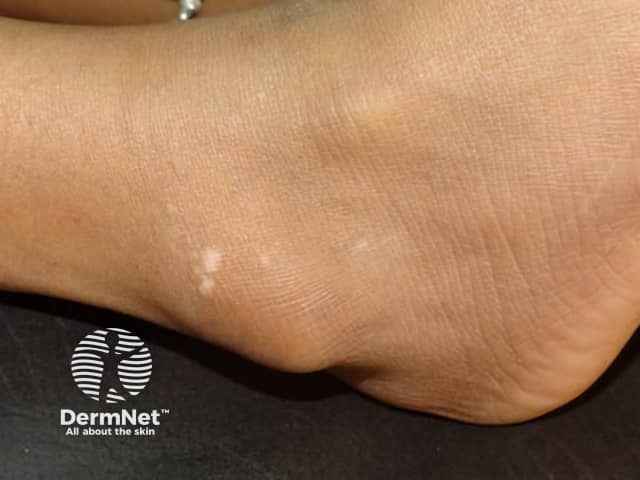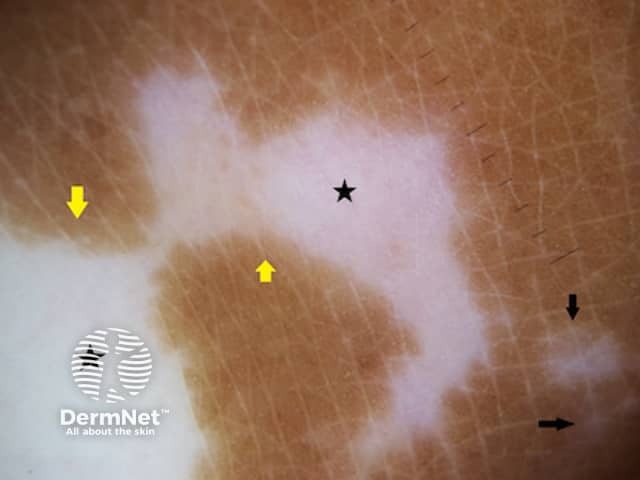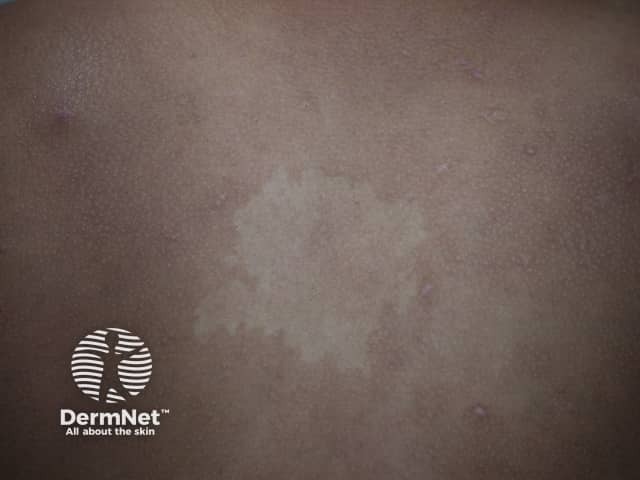Main menu
Common skin conditions

NEWS
Join DermNet PRO
Read more
Quick links
Autoimmune/autoinflammatory Diagnosis and testing
Author: Prof. Balachandra Ankad, Dermatologist, S Nijalingappa Medical College, Karnataka, India. DermNet Editor in Chief: Adjunct A/Prof Amanda Oakley, Dermatologist, Hamilton, New Zealand. October 2019.
Introduction Clinical features Dermoscopic features Differential diagnoses Histological explanation
Vitiligo is a common acquired depigmentation of the skin due to autoimmune destruction of melanocytes. It is characterised by well-circumscribed chalky-white macules and patches. Hairs in the involved skin may be normal or white.
The clinical manifestations of vitiligo include depigmented macules and patches on the skin, mucous membranes, and hair. White hairs in the involved area are associated with a poor prognosis.

Vitiligo on the gluteal area

Vitiligo of the ankle

Vitiligo
Stable vitiligo is characterised by a sharp border, white structureless areas, reduced pigment network, and perilesional and perifollicular hyperpigmentation, whereas active disease demonstrates a starburst pattern, tapioca sago pattern (satellite lesions), micro-koebnerisation and comet-tail appearance.



Achromic naevus Pityriasis alba on the cheeks Pityriasis versicolor 



The histology of vitiligo shows a normal epidermis with loss of melanocytes. A normal reticulate pigment network is due to melanocytes in the rete ridges. In vitiligo, destruction of melanocytes results in loss of the pigment network resulting in the dermoscopic glow.